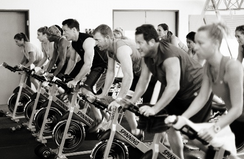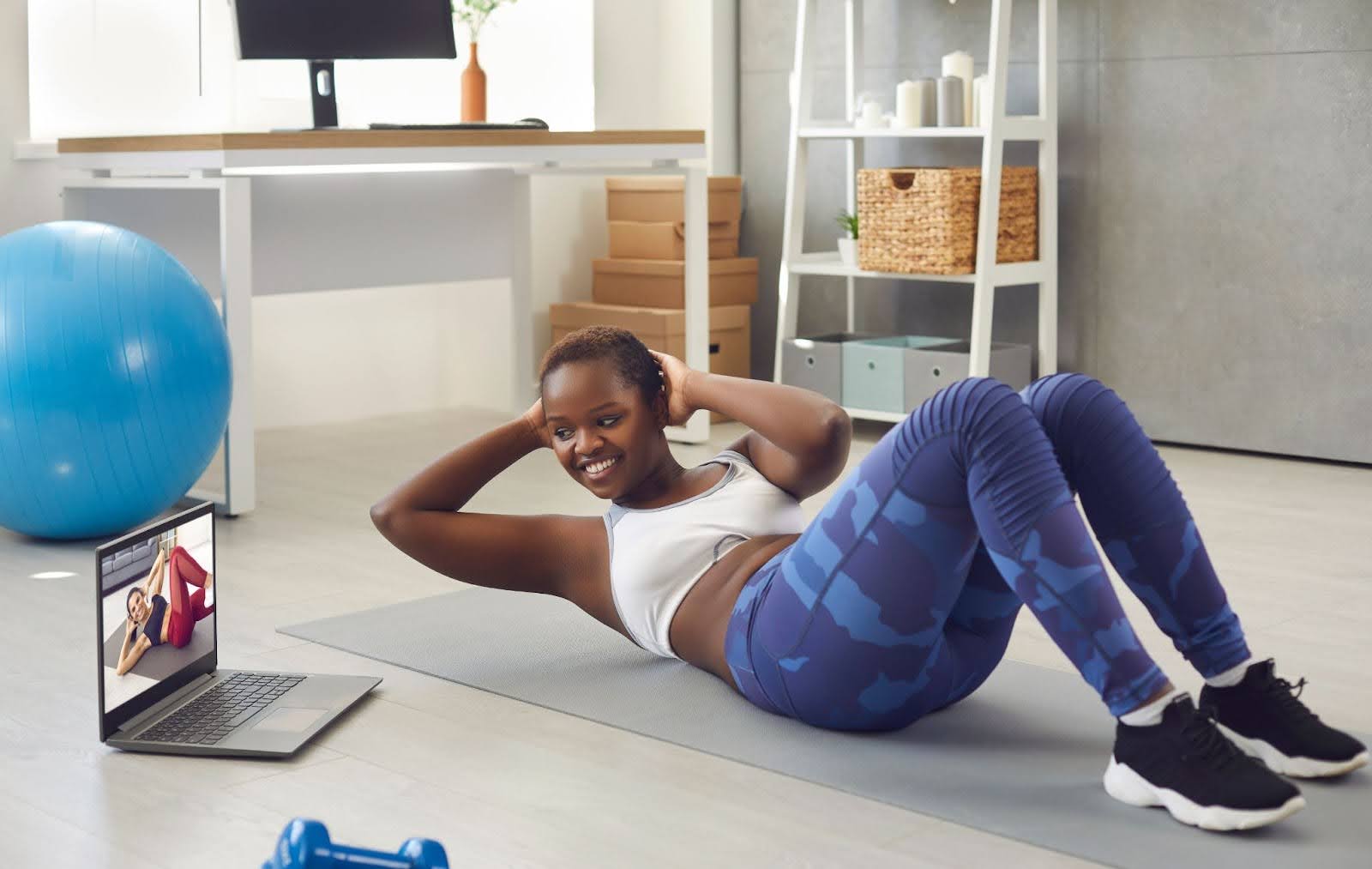
1) First decide on the drills, THEN find music that works with the drills. A lot more often people do that in the reverse order. I think it’s great to have specific songs you want to use, but first write your drills, then figure out where that song best fits. And I’m not saying that music doesn’t matter, because I think it’s a very powerful tool if it’s used properly. BUT, remember drills first, music second.
~Cat Kom
2) Use visualization. Visualization is a powerful tool that allows your riders to really FEEL more of an experience. Using terms like “riders up ahead”, “passing on your left”, “leave them behind”, and “reel in the next rider” really resonates with a lot of people, driving them to feel like a real athlete going after it. In my 60 minute spin classes I often tend to lead it like an XC mountain bike race. I have a lot of positive responses from doing that. Try it!
~Lisa
3) Identify your targeted outcome. Start designing your class by identifying your “targeted outcome.” That is, how do you want to feel at the conclusion of your ride? Do you want your legs “heavy”? If so, perhaps design significant amounts of seated climbing. Do you want your legs tired, but not blown out? If so, go for more long seated flat rides. Do you want to push into the anaerobic threshold? If so, you might blend sprints in between a climb and a flat ride.
Let’s say, for instance, you go with the anaerobic ride. I would then identify the style of interval class I want to teach. It may be multiple, two-minute breakaways with one minute recovery followed by a standing climb. Or, for increased intensity, it will be a series of 20-second sub-max with 40 second recovery.
If the interval is designed to produce “heavy” legs, I’ll use an 8 minute ride and incorporate seven 20 second breakaways using negative splits. A negative split is a track or swimming term that means each breakaway is “faster” than the previous breakaway. That is followed by a sustained 70% ride that flushes the lactic acid out and leads into climbing intervals. Then we re-load and go for another 8 minute series.
Once I know where I want to be, I find music that brings me there. Then I tell my class that everything you have done up to this point in life was designed to produce the body you currently have. If you want the world to change, show up differently. (Okay, I use the second one — not the first.) 🙂
~Mike
4) Be adaptive. Be open to allowing the class dynamic and energy to shape your workout. If something I have designed seems to be not what the doctor ordered, I switch it up. Even if that means teaching on the fly.
~Rebecca
5) It’s great to use a theme, either for the entire class, or for parts of class. For example a theme for the entire class might be “Out of your comfort zone, but not out of control”. So the idea is to, throughout class, push yourself to your 85% max, but not over if you can’t bring it back down quickly. How many analogies can you use there, right?
Fill your cup, but don’t overflow it. Climb to the top of the hill, but don’t go over it. Come close to mouth only breathing, but not to steady mouth only breathing. Challenging, but maintainable. Etc., etc.!
And/or take a subset of the class and have a focal point. It can be a drill, a thought, a challenge. For example, I LOVE to drive with emotion. I might take 2 songs that talk about YOU getting yourself where you are today like “All me” and “Started from the Bottom” by Drake and just plant little seeds in rider’s heads about how THEY did this, no one else. They are doing this, no one else. You don’t have to say much, just enough to get them thinking and drawing emotion and power into what they’re doing. With that said, think about using songs that aren’t typical “Spin” songs, but that draw emotion out, therefore inspiring a great climb (or sprint).
~Cat Kom
6) Think about your audience. For my early morning classes, I know they are just waking up and need a little extra warm up (and time to fully wake up!). The goal for those classes is for them to leave feeling energized and ready to tackle the day. In the evening, most of the crowd is coming from work and ready to get the frustrations of the day out in sweat. On the weekends, there is a little extra fun built into the profile…it’s the weekend, party time right? So bring that party vibe into class!
~Mere W
7) Provide options. Always think of how you can offer options to “spice it up” or “tone it down”.
~Rebecca
8) Design your weekly classes to feed off of each other. For example, if I’m teaching 3 classes a week I may target one entire workout that focuses mostly on climbing and heavy gear anaerobic shorter intervals. Then I’ll let the class know the focus for the next workout will be more endurance based with longer aerobic drills and then possibly some sprint intervals being the focus. On the third class I might target a mix, and even throw in some strength drills on the floor (if you’re a personal trainer or strength coach). Think of it like an abs/chest day versus a legs/butt day where you’re designing a weekly plan, not just a daily plan. It encourages your students to come back for your next workout to create a balanced weekly routine.
~Coach Meredith
9) Teach people how to ride the bike. I’ve had more people come to me after class (not at Studio SWEAT of course) that say, thank you! No one ever really taught me how to ride the class. Sad huh! Now they’re less intimidated and will probably continue! Think about that in your class design and in your cueing.
~Lisa
10) To use or not to use BPM in sync with RPMs? That is the question. Well, there are different schools of thought on this. You ask Mike, and he says yes, tempo drives the legs, distracts the mind. And that’s a method to his madness. Whereas Carolyn says “I use slower powerful songs for strong climbs and songs for break-aways and jumps that contain crescendos and build. I rarely use bpm. I encourage my class to ride ahead of the beat. I feel that utilizing bpm or TEMPO keeps people in a comfort zone sometimes rather than challenging themselves to push harder.” Hmmm, another good point.
Honestly I get both mindsets, and I personally use both philosophies in designing my classes. Sometimes I will write an entire class where I let the student know up front that we won’t be using the beat. Other times, I might say we will use the beat to drive our RPMs for the entire class. With the latter approach it’s super important that you stress students to just come close to pedal speed, AND that you clearly tell them what level of intensity or heart rate they should feel or be at each moment. So always teaching with cues such as, “We’re riding at 85 RPMs, give or take 5, and it should feel like you’re working at an 8 on a scale of 1-10, where one is ‘I could do this all day long’, and 10 is ‘I cannot continue without passing out!’”. The bottom line is that you need to do what works for you! By the way, if you don’t hear the beat, don’t go there. Ha!
~Cat Kom, influenced by Carolyn & Mike









Comments - 0